EECS 314: Electrical Circuits, Systems, and Applications
Instructor: Professor Alexander Ganago
Coverage
EECS 314 Electric circuits, Systems, and Applications covers topics in electric circuits, electronics, and control systems for non-EE majors.
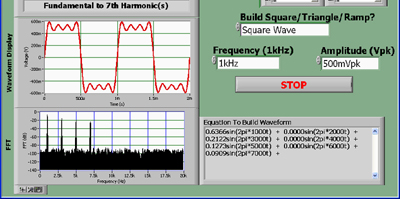
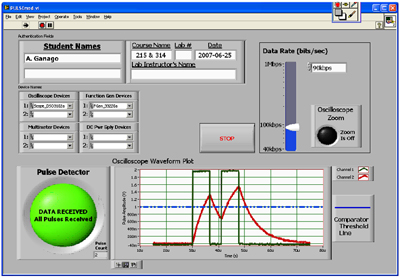
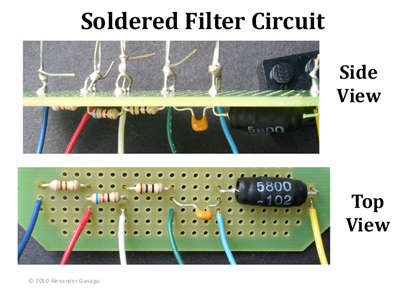
In EECS 314 you will:
- Learn the concepts and principles of Electrical Engineering (EE), which are at the heart of today’s analog and digital electronic devices
- Understand, build, and analyze electronic circuits such as amplifiers, filters, temperature controller, etc.
- Learn the language of EE colleagues, which will enable you to work effectively in multi-disciplinary teams.
Lab
Engineering is a practical profession; new learning becomes valuable when you apply it to building things: this is what you do in the lab. EECS 314 Labs include computer-controlled experiments based on LabVIEW – software very popular in industry; experience in using it may be advantageous for your job search. The new Temperature Controller Lab introduces you to Analog/Digital, and Programmable circuits – examples of Embedded Systems widely used in industry as well as consumer electronic devices.
Contents of EECS 314 Labs:
1) DC Lab
- Measure voltages, currents, and resistances; learn to avoid blunders
- Prove that a Light-Emitting Diode (LED) does not obey Ohm’s law
- Learn that a MOSFET transistor act as an electronic switch
2) AC Lab
- Measure the Rise and Fall Time of standard signals; compare with theory
- Measure FFT spectra of standard signals; build various waveforms of sine waves
- Measure Telephone tone dialer signals – waveforms and FFT spectra
3) Transients Lab
- Study exponential responses of RC circuits to square wave input signals
- How many pulses does you system receive when 2 pulses are sent?
- Measure 3 types of responses of RLC circuits to square wave input signals
4) Filters Lab
- Solder your own circuit, which acts as any of the 4 types of filters
- Measure the transfer functions of each type of filter, using your circuits
- Observe and study resonance in your circuit
5) Operational Amplifier (Op Amp) Lab
- Build several amplifiers with fixed and variable gain; study their responses
- Build and study an active filter that can amplify and suppress signals
- Turn your circuit into a comparator key block of a control circuit
6) Analog/Digital, and Programmable Temperature Controller Lab
- Verify the functionality of two temperature controllers
- Measure the voltages and determine the logic states in A/D controller
- Change the functionality of Programmable controller by altering the C code
Additional Information
Screencasts (audio/video recordings) posted on CTools web site for registered students provide a wide variety of resources for learning: mini-lectures and problem-solving strategies, lab demonstrations of key concepts, review of lab procedures and hands-on skills, etc.
Textbook(s)
Required:
1) Ganago, Alexander. /Making Sense of Electrical Engineering in the Lab: a New Lab Book for Non-EE Majors/ . 2nd ed. Hoboken, NJ: Wiley Custom Services, 2007.
Recommended:
2) Ganago, Alexander. /Making Sense of Electrical Engineering 2nd Edition with EE Supplement for UMICH Set/ . 2nd ed. Hoboken, NJ: Wiley Custom Services, 2009.
3) Hambley, Allan R. /Electrical Engineering: Principles and Applications/. 4th ed. Upper Saddle River, NJ: Pearson Prentice Hall, 2008.
Syllabus
Key topics:
- Basic laws of electric circuits
- Voltage and current division
- Maximal transfer of power from the source to the load
- Semiconductor diodes, Operational Amplifiers (Op Amps), MOSFET transistors
- Capacitors and inductors store electromagnetic energy
- Responses of circuits with capacitors and inductors to time-dependent voltages
- Filter circuits and their transfer functions; resonance
- DC and AC power distribution circuits; transformers
- Safety in handling electric circuits; Ground-Fault Circuit Interrupter
- Rectifiers and power supplies
- Analog and digital electronics
- Memory needed for data storage
- Logic gates and a Set-Reset latch (simplest memory cell)
- Microprocessors in computers and embedded systems
- Sensors; analog and digital control circuits
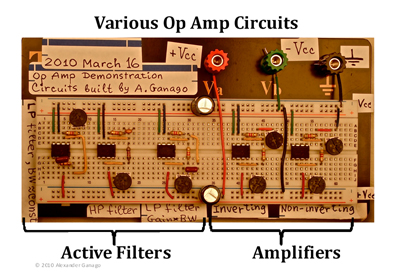
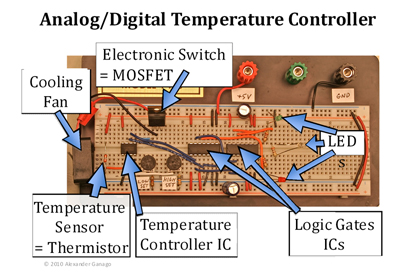
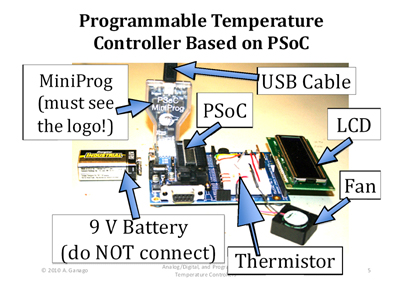
 MENU
MENU 
